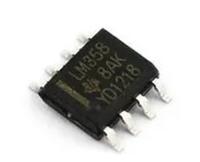| 生命周期: | Obsolete | 零件包装代码: | SSOP |
| 包装说明: | SSOP, | 针数: | 28 |
| Reach Compliance Code: | unknown | HTS代码: | 8542.39.00.01 |
| 风险等级: | 5.66 | Is Samacsys: | N |
| 输入调节: | STANDARD | JESD-30 代码: | R-PDSO-G28 |
| 长度: | 10.2 mm | 逻辑集成电路类型: | LOW SKEW CLOCK DRIVER |
| 功能数量: | 1 | 反相输出次数: | |
| 端子数量: | 28 | 实输出次数: | 10 |
| 最高工作温度: | 70 °C | 最低工作温度: | |
| 输出特性: | 3-STATE | 封装主体材料: | PLASTIC/EPOXY |
| 封装代码: | SSOP | 封装形状: | RECTANGULAR |
| 封装形式: | SMALL OUTLINE, SHRINK PITCH | 传播延迟(tpd): | 5 ns |
| 认证状态: | Not Qualified | 座面最大高度: | 2 mm |
| 最大供电电压 (Vsup): | 3.465 V | 最小供电电压 (Vsup): | 3.135 V |
| 标称供电电压 (Vsup): | 3.3 V | 表面贴装: | YES |
| 温度等级: | COMMERCIAL | 端子形式: | GULL WING |
| 端子节距: | 0.65 mm | 端子位置: | DUAL |
| 宽度: | 5.3 mm | Base Number Matches: | 1 |
| 型号 | 品牌 | 获取价格 | 描述 | 数据表 |
| 11257-811 | ETC |
获取价格 |
LOW-SKEW CLOCK FANOUT BUFFER ICs |

|
| 11257-812 | ETC |
获取价格 |
LOW-SKEW CLOCK FANOUT BUFFER ICs |

|
| 11257-813 | ETC |
获取价格 |
LOW-SKEW CLOCK FANOUT BUFFER ICs |

|
| 11257-814 | ETC |
获取价格 |
LOW-SKEW CLOCK FANOUT BUFFER ICs |

|
| 11257-816 | ETC |
获取价格 |
LOW-SKEW CLOCK FANOUT BUFFER ICs |

|
| 112579 | AMPHENOL |
获取价格 |
RF BNC Connector, Female, Panel Mount, Press Fit Terminal, Receptacle |

|
| 112580 | AMPHENOL |
获取价格 |
RF BNC Connector, Female, Panel Mount, Cable Mount, Solder Terminal, Jack |

|
| 112581 | AMPHENOL |
获取价格 |
RF BNC Connector, Female, Panel Mount, Cable Mount, Solder Terminal, Jack |

|
| 112589 | AMPHENOL |
获取价格 |
RF BNC Connector, Male, Cable Mount, Crimp Terminal, Plug |

|
| 112591 | AMPHENOL |
获取价格 |
RF BNC Connector, Female, Board Mount, Solder Terminal, Jack |

|
 LM317T数据手册解读:产品特性、应用、封装与引脚详解
LM317T数据手册解读:产品特性、应用、封装与引脚详解

 一文带你了解?DB3二极管好坏判断、参数信息、替代推荐
一文带你了解?DB3二极管好坏判断、参数信息、替代推荐

 LM358DR数据手册:引脚说明、电气参数及替换型号推荐
LM358DR数据手册:引脚说明、电气参数及替换型号推荐

 OP07CP数据手册解读:引脚信息、电子参数
OP07CP数据手册解读:引脚信息、电子参数
